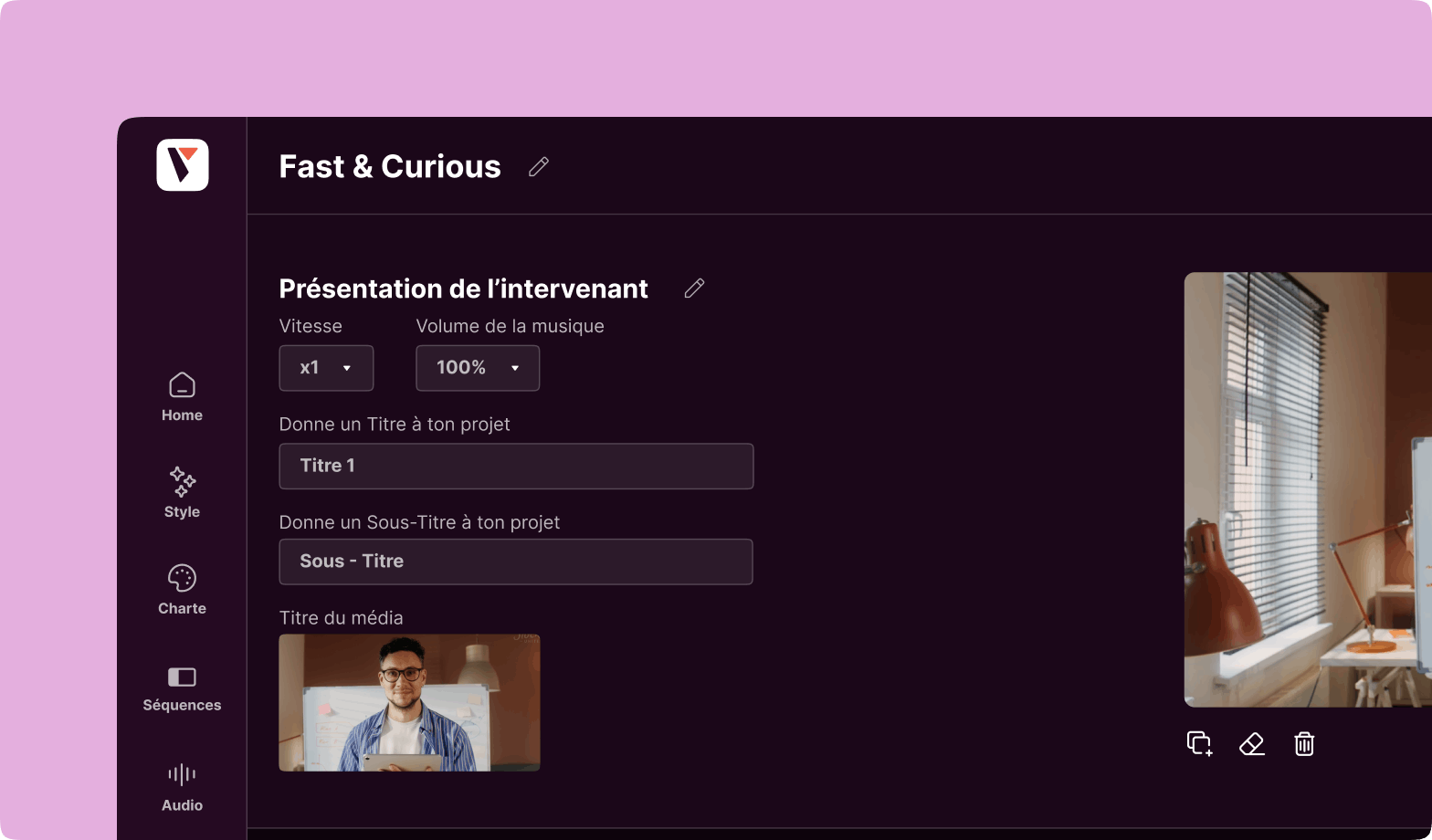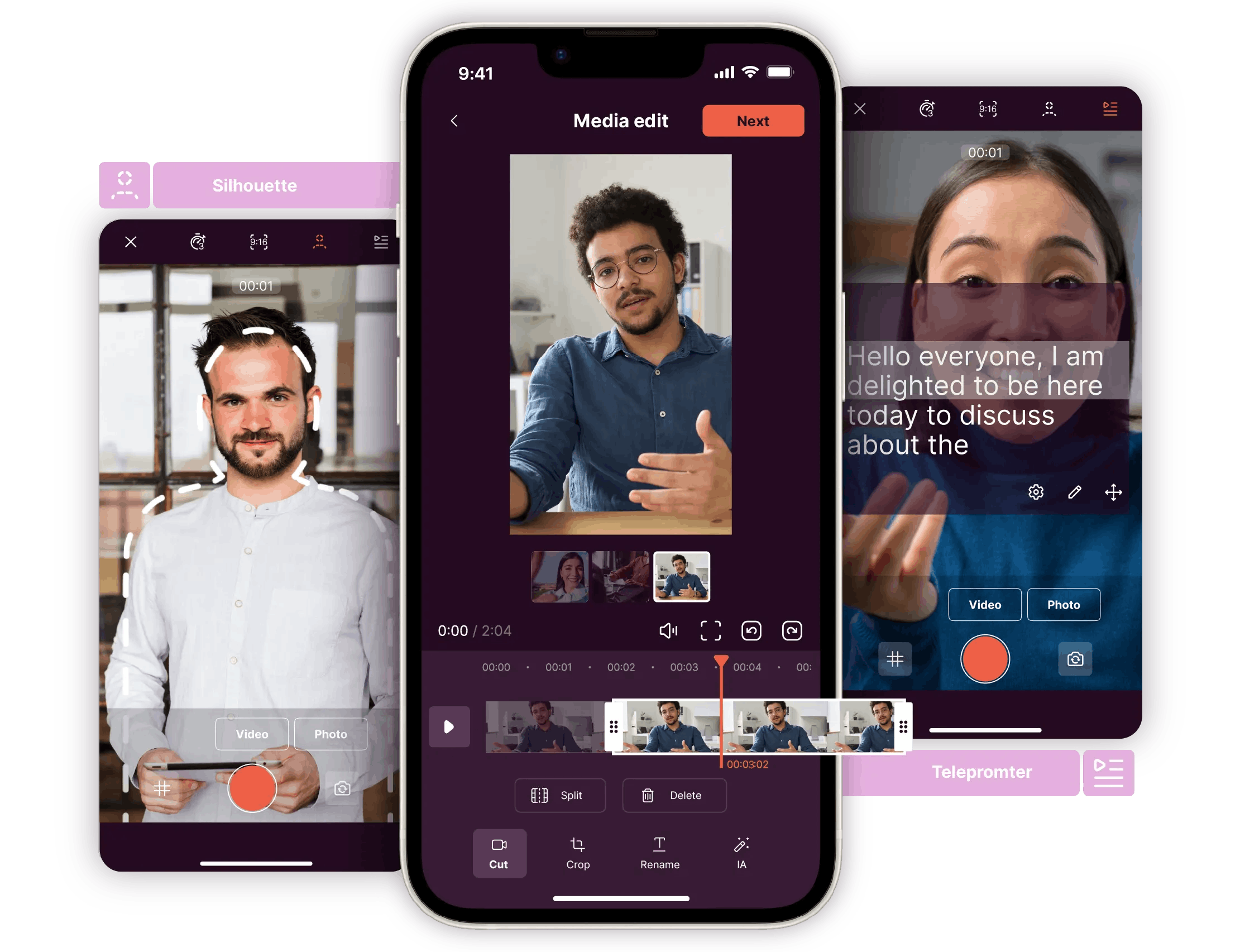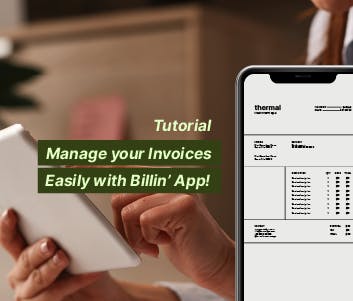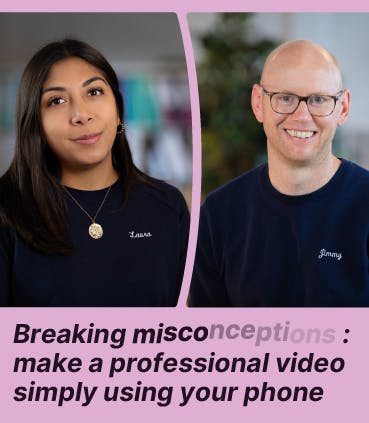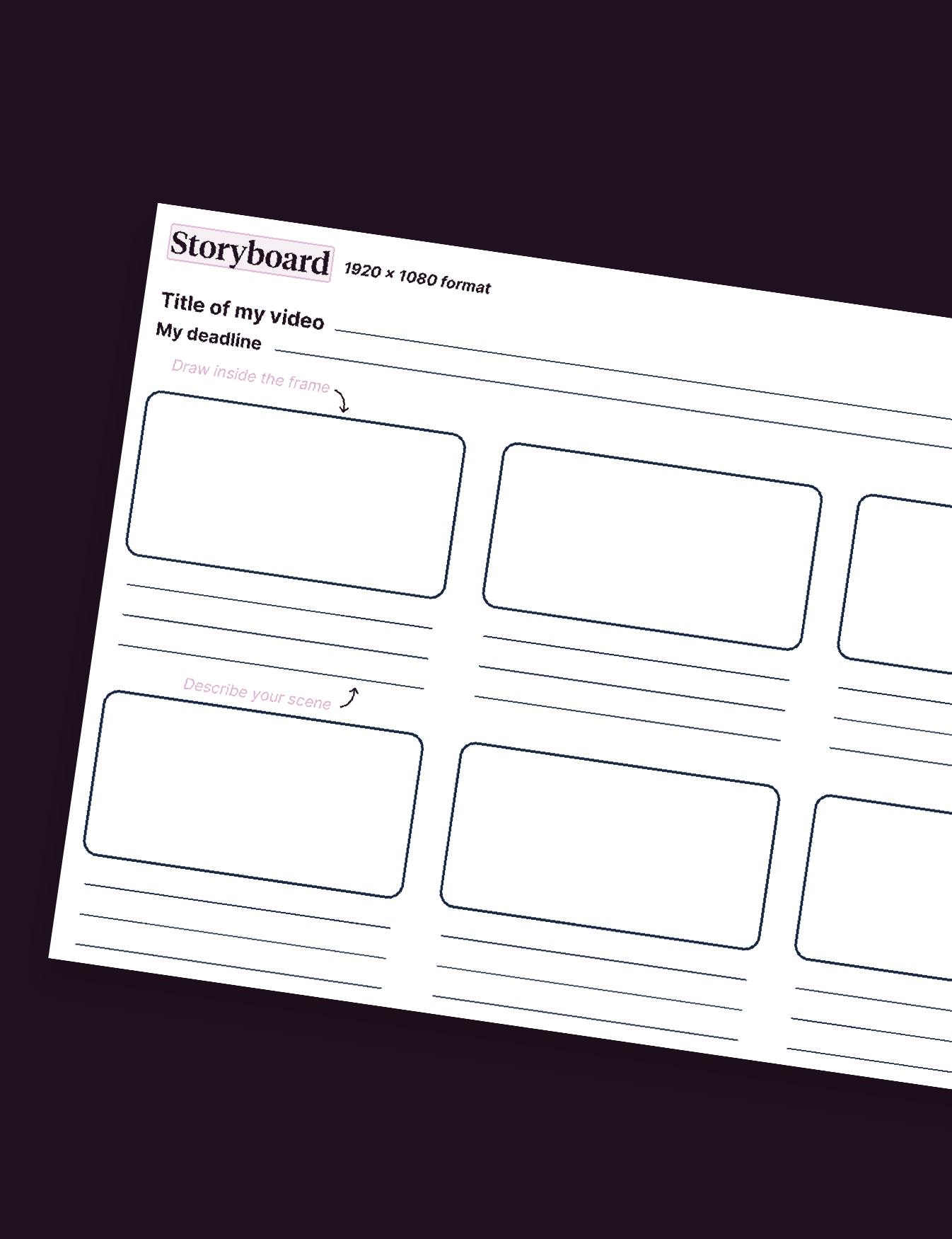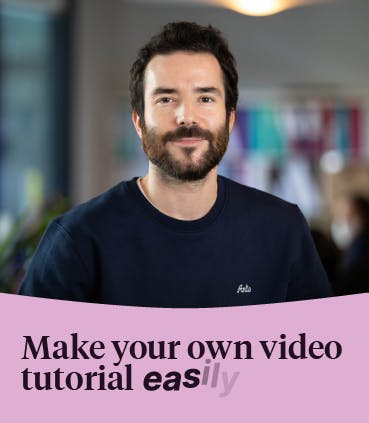How to Create Engaging Case Study Videos

Case study videos have become an increasingly popular marketing tool across many industries. Indeed, they showcase real-life examples of how a company’s product or service has solved a problem for a particular customer. They also bring value in a relatable and compelling format.
Video case studies build credibility, offer social proof, and help your potential customers envision themselves benefiting from the solution offered by your product or service. However, creating a case study video that is engaging, effective, and stands out can be a challenge-especially if you are a beginner in producing case study videos.
In this article, we will explore the best practices, strategies, and a step-by-step guide to help you create effective case study videos that captivate your audience and convert your viewers into customers.
Understanding the Purpose of a Case Study Video
Before we dive into the practical steps, it's essential to understand the key role case study videos play in marketing and sales for your company. The primary purpose of a case study video is to tell the success story of a customer who used your product or service. In this video testimonial, they share how your solution helped them solve a problem or meet a goal.
Thus, these case study videos serve as social proof, reinforcing your brand’s credibility while answering a key question potential customers often have: “Will this product or service work for me?”
Of course, traditional written case studies can serve a similar function. However, video case studies have a unique advantage due to their visual and emotional appeal. Indeed, most people remember information better when it’s presented visually. Also, they can connect with the real people behind the testimonials. The emotional resonance of a video is far more impactful than reading a static document.
The main goals of an engaging case study video are to:
Showcase how your product or service solved a real-world problem.
Provide relatable and authentic testimonials from real clients.
Demonstrate measurable results and highlight success stories.
Build trust with your audience, showing them that your product can work for them too.
What are the different types of case study videos?
Depending on your marketing needs and the level of complexity you intend to tackle, there are four types of case study videos:
Customer Testimonials
These videos are straightforward and to the point, where you interview your clients about their experience with your product or service. This type of video is not extremely difficult to film. All you need is a simple shoot location and minimal editing to deliver an outstanding testimonial video.
Customer Review
Instead of focusing on a clear narrative, you ask your clients to focus on specific features of your product. They share how they use it and the benefits they gain from using it regularly.
Case Study Narrative
A case study narrative is more complex than the two previous types of case study videos. It includes a mix of on-camera interviews with your customers, B-roll visuals, graphics, and font treatments. It requires more shooting time and editing because it is more complex than the previous video types.
Q&A Style Interview Video
In this format, you prepare specific questions and ask your customers to answer them honestly. This format is appropriate for live sessions on your social media platforms, which can boost your digital marketing efforts. Indeed, consumers watch live videos 10-20 times longer than on-demand content.
What are the key elements of a compelling Case Study Video?
Element #1: A Clear Problem-Solution Structure
A good case study video is no different from any good story. To be convincing and compelling, it should follow a narrative structure that includes a clear beginning, middle, and end. In this case, the “problem-solution” format works best:
- The Challenge: Start by highlighting the problem or challenge that your customer faced before using your solution. Keep this clear, relatable, and concise. Ensure that the presented challenge is something your target audience knows and can identify with.
- The Solution: Show your audience how your product or service helped resolve the mentioned challenge. Focus on the process, the specific features, or the service that made the difference.
- The Outcome: Provide evidence of the tangible results achieved by your customers after implementing your solution. Don't hesitate to use numbers, statistics, or any other measurable outcomes that clearly demonstrate success.
Element #2: Authenticity and Credibility
Authenticity is crucial in creating an engaging case study video. Indeed, your viewers should feel that the testimonial is coming from a real customer with real problems and real results. Avoid scripting the interviewees too heavily. Instead, let them tell their story in their own words. Their language, expressions, and enthusiasm will feel more genuine, making it easier for the audience to trust them.
Ensure the person you’re interviewing is accustomed to being in front of a camera, and that their role in the company is clear. For example, an interview with a senior executive or key decision-maker at a company will be more impactful than one with a lower-level employee. The credibility of the person telling the story directly impacts the overall trustworthiness of your video.
Element #3: A Human Connection
A good case study video is more than just facts and figures – it’s a story about people. Consequently, you should focus on the human element in your video content. Start showing the faces of the people behind your business. Let them explain in emotional terms how your solution made their work easier or their business more successful. Indeed, humanizing the story makes it more relatable and engaging for your target audience.
Element #4: Professional Production Quality
While the content of the case study is the most important aspect, you cannot overlook the quality of the production process. Indeed, a poorly produced video can drive your potential customers away from your message and make your brand seem unprofessional. This doesn’t mean you need a Hollywood-level production.
Nevertheless, basic elements like clear audio, proper lighting, good framing, and smooth editing are extremely important for your video. Also, using a professional videographer or editor can be a worthwhile investment.
Element #5: Use of Visuals and Supporting Graphics
While the customer’s words can bring significant value, visuals play a huge role in keeping the audience engaged. Indeed, they help break up the interview and reinforce the key points of your testimonial video. For example, we can include B-roll footage showing your product or service in action, shots of your customer’s workplace, and supportive graphics like charts or on-screen statistics . Also, an effective use of visuals can illustrate complex ideas and make your case study more memorable to your viewers.
Element #6: Length and Pacing
A good case study video is concise and straight to the point. As viewers’ attention spans are short, aim for a length of about 2-5 minutes. If your video is longer, you risk losing your audience. Keep the pacing tight and focus on the most compelling parts of the story. Edit out unnecessary details and streamline the narrative to emphasize the problem, solution, and results.
How To Create Great Case Study Videos In 9 Steps
To produce effective case study videos, you must remember that you have three main steps: pre-production, production, and post-production. With the right approach, planning, and tools, you can fulfill your marketing goals and boost your sales to reach your potential customers as you want.
Step #1: Select the Right Customer
Choosing the right customer for your case study is critical. You want a customer who has experienced measurable success using your product or service and fits your target audience. Ideally, this customer should:
- Be enthusiastic about your brand and willing to talk on camera.
- Have experienced a meaningful transformation due to your solution.
- Represent an industry or use case that aligns with your ideal customers.
Step #2: Craft Your Story
Once you’ve selected a customer, the next step is storyboarding your video. Start by defining the key points you want to cover in the video:
- Who is the customer? (Brief background, new user of your brand or not...)
- What was the challenge they faced? (Specific problem or need)
- How did they find your solution? (How they discovered your product or service)
- How did your solution help them? (Product features, service benefits...)
- What were the results? (Measurable outcomes)
- How do they feel about the overall experience? (Personal reflections, satisfaction)
Use these points as a rough outline but be prepared to adapt during the interview.
Step #3: Prepare Your Interviewee
It’s essential to prepare the interviewee before filming to ensure they feel comfortable and confident on camera. Share the questions or topics you’ll cover in advance, so they can think about their answers as well.
However, avoid over-rehearsing or providing a full script. Indeed, natural responses are more engaging and authentic, as you are supposed to help a customer who wants to buy from you.
Step #4: Set Up the Interview
The interview is the core of your case study video, so the setup is crucial. Film your video in a quiet, well-lit space. Natural light is ideal, but soft artificial lighting can work if need be. Avoid backlighting, which can cast shadows on the subject’s face.
The interviewee should be seated comfortably, and the camera angle should be eye level or slightly above. This will help create a more flattering and engaging shot. Also, pay attention to the background – it should be clean and professional, preferably showing the customer’s workspace or industry-specific context to enhance the authenticity of your client's testimonial.
Use a high-quality microphone to ensure the interviewee’s voice is clear and audible. If possible, use a lapel microphone positioned just above the interviewee.
Step #5: Capture B-Roll Footage
B-roll footage is essential for enhancing your case study video. B-roll refers to supplemental footage that supports or illustrates the main content. For example, if your customer is discussing how your product helped streamline their manufacturing process, showing shots of the factory floor or your product in use will make the video more dynamic and engaging.
In addition to showing your product or service, consider filming the customer’s office environment, team interactions, or daily operations. This helps your viewers better visualize the customer’s world and reinforces the connection between their business and your products.
Step #6: Edit Your Video for Conciseness and Clarity
Once you have the raw footage, your next step is to create a clear, tight, engaging narrative that holds your viewer’s attention from start to finish. Start by reviewing the interview and B-roll footage to identify the most compelling parts. Edit out any repetition, unnecessary details, or long-winded explanations.
Ensure the video flows logically with a challenge-solution-outcome narrative. Also, you may use transitions to move smoothly between segments and avoid abrupt cuts.
Step #7: Incorporate Testimonials and Results
Be sure to emphasize key testimonials from your customers and any measurable results they’ve achieved. For instance, you can display quotes on the screen alongside the interviewee’s spoken words. Or you can overlay statistics accompanying B-roll footage. Visualizing the impact in this way makes the results feel more concrete and credible.
Step #8: Include a Call-to-Action (CTA)
End the video with a clear and compelling call-to-action. After showcasing how your product or service solved a real customer problem, invite your viewers to take the next step. Here are some great examples of CTAs:
- contact your sales teams
- sign up for a demo
- visit your website for more information
The CTA should feel like a natural conclusion to the case study. Indeed, it will help you capitalize on the emotional and logical appeal you build throughout the video.
Step #9: Promote Your Case Study Video
Once your video case is complete, it’s time to share it with the world. There are several channels where you can promote your case study video:
- Your Website: Feature the video on your homepage, product pages, or dedicated case study sections.
- Social Media: Share the video on platforms like LinkedIn, Facebook, Twitter, and Instagram. Use short clips or teaser versions to drive engagement.
- Email Marketing: Include the video in your email newsletters or customer success campaigns.
- Sales Presentations: Equip your sales team with the video for use in pitches and presentations.
- YouTube or Vimeo: Upload the video to platforms like YouTube or Vimeo to reach a wider audience.
To maximize the video’s impact, consider repurposing the video content in different formats: blog posts, infographics, or even audio clips.
4 Examples of Inspiring Case Study Videos
This Slack video is both fun and relatable. It does a great job in showcasing the features and benefits on camera interviews. And it does a great job in convincing its potential customers to buy their product.
Example #2: Google Ads Case Study
This visually engaging video is relatable and features a customer who is comfortable on camera. She’s great at telling the story of how Google AdWords helped grow her business and seamlessly includes stats in her narrative.
Example #3: Claranet and Pets at Home
This London-based company published an eye-catching attention through a heartwarming soundtrack and clips of different animals. Moreover, it uses animation to underline the role of Claranet to help pets to grow at home.
Example #4: Samsung - Superdry Case Study
This video displays how Superdry solution helped Samsung's staff and how they put this solution in action. TMoreover, the opening of the video does a great job as it sets the scene immediately.
Ready to create your first Case Study Video? Contact Pitchy
Are you ready to create your first case study video? Then, Pitchy is the right solution for your company. Indeed, we provide you with a complete solution that is tailored to your sales and content marketing goals. If you are interested in our video production solution, feel free to ask for a demo.
Resources
Most popular articles

How to make a success of your employee interview?

What are the trends in marketing videos?
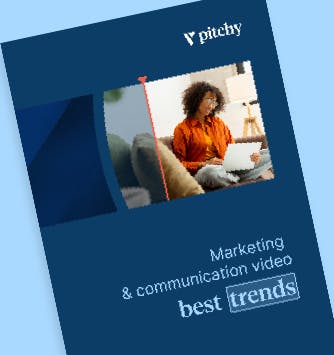
We've listed the major trends in terms of video formats for you.
